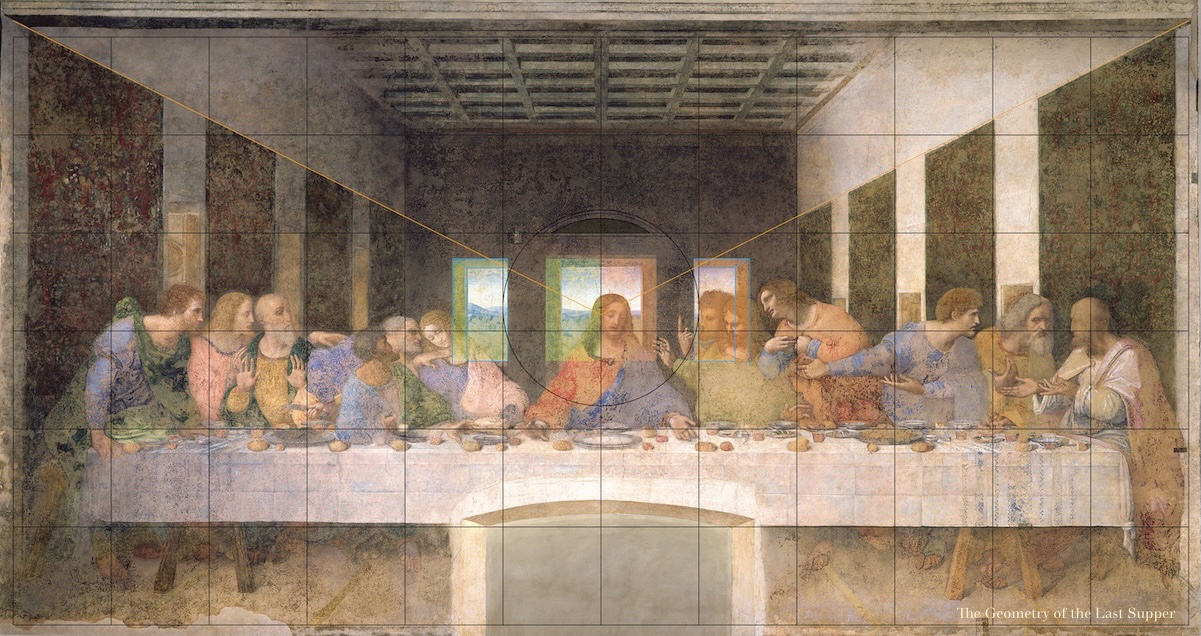The Grid #6

As we wrap up this mini-series on the role of the grid in The Last Supper, let’s take a moment to summarise how the grid governs the composition, and where it breaks the rules.
The grid acts as a structural framework for the proportions of the entire scene. It dictates the placement of key elements: the dining room’s walls, the ceiling, the back wall, the table, and even the floor. It also informs the positioning of the tapestries on either side of the composition.
Notably, the arrangement of the four groups of apostles follows the grid’s boundaries, lending a specific rhythm and symmetry to the moment of The Last Supper.
However, what truly sparks our interest are the elements that seem to defy the grid. For instance, the openings of the windows and the door don’t align with the grid. The circular pediment also doesn’t conform, nor do the main lines of perspective suggested by the receding tapestries.
It shouldn’t come as a surprise to find architectural elements in The Last Supper that disobey the grid’s rigid order. After all, while the grid provides structure, its inherent inflexibility can sometimes limit creativity and harmony. Yet, it is in these apparent departures from order that Leonardo’s true intent begins to surface, and this is where the geometry itself starts to speak.